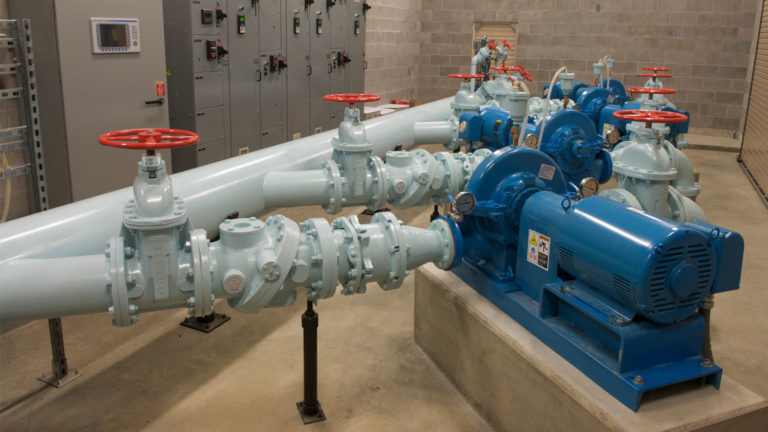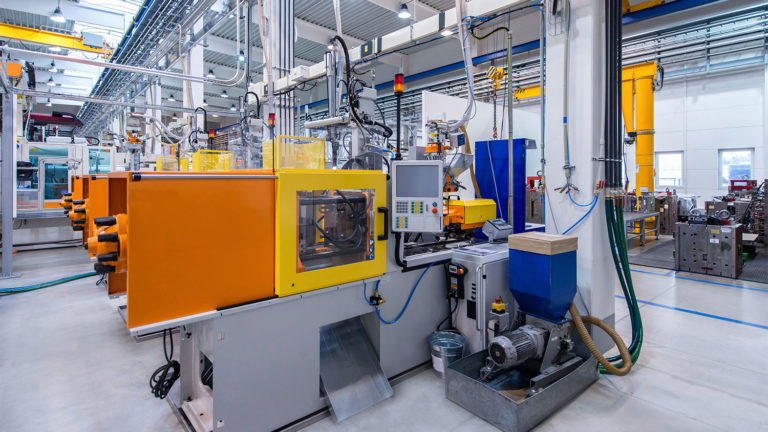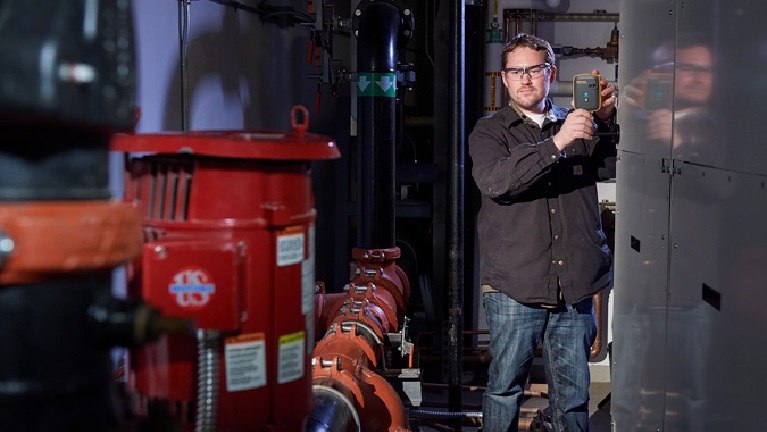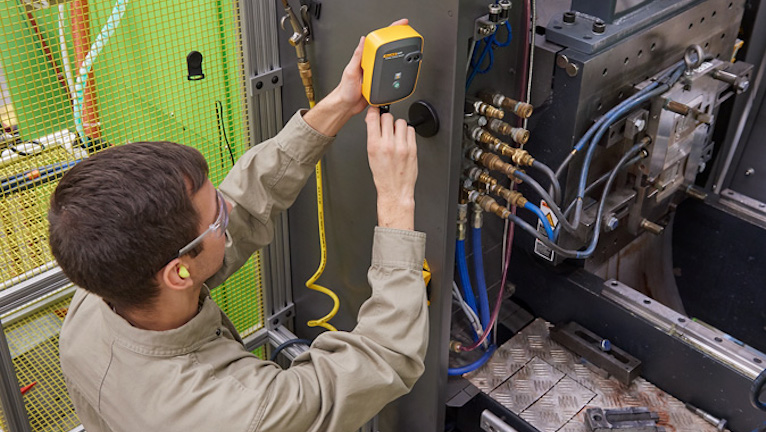IIoT helps simplify the path to CBM
Managing industrial assets for optimal performance, safety and longevity has long been a mix of art, science and experience. Understandably, some organizations tend to err on the side of caution, thinking that too much maintenance or replacing equipment too soon, is less of a risk than too little, too late. Others may be in a difficult-to-escape cycle of reactive repairs and stilted preventive efforts. The rise of the Industrial Internet of Things (IIoT) is paving the way for a fundamental shift in that approach to asset management, maintenance and reliability — from reactive and preventive, to condition-based maintenance (CBM).
The availability of more reliable and affordable connectivity and sensors and the rapid growth and acceptance of the cloud are expanding the promise and practicality of IIoT for many industrial and commercial enterprises. These developments are helping them find a more practical and cost-effective way to maintain a growing list of assets with fewer people. The availability of more flexible and affordable sensors along with the ability to save data to the cloud, where it can be accessed and analyzed from anywhere on any smart device, create new opportunities for using that data to develop asset-specific maintenance strategies.
Industrial facilities are already using the IIoT to collect enormous amounts of automation, control and process management data that is being used to inform decisions and actions related to those systems. However, adoption of the IIoT within maintenance and reliability (M&R) is still in the early phase. Many M&R teams want to apply IIoT technologies to collecting actionable asset data and use it to guide real world maintenance strategies, but this task is typically not simple.
“Reliability, maintenance and repair have not benefited as much from the collection and usage of cloud-based data. The majority of day-to-day maintenance and monitoring activities remain manual and often reactive, particularly on non-critical equipment” — Honda North America (NA) engineering lead.
According to a May 2018 study1, a number of reasons explain why the IIoT has not gained as much traction in the maintenance arena. “The most significant inhibitor of IIoT for predictive maintenance deployment is a skill shortage of big data scientists and a lack of understanding of Industry 4.0.”1 The good news is that organizations that implement a real-world IIoT predictive maintenance strategy can transform M&R into a business value engine.
Overcoming obstacles
Although the IIoT can help most M&R teams streamline workflow processes and improve efficiency, uptime, and overall asset health and reliability, many of these teams may not be using the IIoT to guide their efforts. When asked why, they often cite a lack of time, training and system/data integration. Digging a little deeper produces a more detailed explanation of why IIoT adoption is limited in this area:
- A reluctance to move from reactive and preventive, to predictive and condition monitoring strategies. Many M&R programs currently rely on scheduled and route-based maintenance which has worked well enough so far; the time and training required to change to a predictive strategy may appear daunting.
- The historically high cost of condition monitoring hardware and software. While the most critical assets in a plant have long been monitored with fixed sensors, attaching fixed sensors to less critical equipment has not been affordable.
- Limited access and the flexibility of IT, including cybersecurity concerns. The application of IIoT entails a wide array of technology choices, including condition monitoring sensors, industrial automation hardware, connectivity, storage, security and analytics platforms. One theory is that since maintenance teams may avoid dealing with IT, they are simply overwhelmed with the many technology decisions required.
- Disparate data streams and/or historical data in silos with no connectivity. When collecting data from many sources, the proprietary nature of most systems and technology often prevent M&R teams from having clear insight into all the data. By some estimates, more than 90% of industrial machines in the world do not have built in network connectivity.1
- Industry analysts suggest that the maintenance culture plays a major role in limiting IIoT adoption and that the blockers cited above are simply euphemisms for a fear of change.
Harnessing the power of the IIoT to improve maintenance
The ultimate goal of maintenance is continuous improvement to ensure more reliable performance, less downtime and lower costs. Although maintenance is not typically synonymous with innovation, maintenance teams have been known for adopting new technologies to improve asset value, including:
- Enterprise asset management (EAM)/computerized maintenance management software (CMMS)
- Thermal imaging cameras
- Vibration handheld tools and sensors
- Pressure, temperature and other gauges
These technologies were adopted because they improve the maintenance team’s ability to catch potential problems early. This is important because maintenance is truly mission-critical. Not only is the health and value of an asset at stake, but even more important, the health and safety of the people on the factory floor depend on the smooth execution of M&R operations. Mistakes can be disastrous and expensive.
Technology alone cannot convince M&R teams to transition to CBM. However, asset managers can take advantage of M&R teams’ commitment to continuous improvement to slowly introduce technology that adds asset data to existing workflows to set their teams on the path to CBM.
The evolution from maintenance-centric to asset-centricity strategies
Creating a complete picture of asset data
Tools, sensors, and other technology and software that automatically aggregate data for analysis are fundamental to a connected reliability framework. However, some solutions focus on just one type of monitoring (such as vibration). That forces plant maintenance teams to manage the complicated issue of aggregating this data with other sources for a complete picture of asset health. All data sources (mechanical, electrical, thermal, control, process and operations, and building management) and types (portable, wireless, and software) should be combined and leveraged to monitor and assess assets and systems.
A robust EAM or CMMS system should also be included to provide insight. The EAM/CMMS must be fully implemented with an asset library and hierarchy and the ability to integrate data from many different sources.
“Integration of data from multiple sources allows for faster and better maintenance decisions. Ultimately, the EAM/CMMS should have the ability to integrate with machine data that provides actionable, event-driven processes,” said Gregory Perry, CMRP, CRL, senior consultant, Accelix.
Integrating existing asset data into EAM workflows
The route to improving maintenance requires that all data sources and types must be available to meet teams wherever they are in the reliability journey. Whether they’re using handheld tools, wireless sensors, supervisory control and data acquisition (SCADA), or any other condition/process data, all this data must be aggregated and stored in a system for future analysis and made available to the right people when they need it.
A natural starting point is to connect existing maintenance management and asset automation systems. While the proliferation of wireless sensors enables M&R teams to collect data from just about any asset, IIoT technology also enables them to unlock the value of existing data by breaking down silos between systems and databases.
Building industrial automation systems that rely on programable logic controllers (PLCs) connected through a SCADA network — the original IIoT — generate billions of data points each day. Many of these data points provide insight into the health of the asset they manage, including:
- Cycle counts
- Runtime hours
- Fuel consumption
- Pressure measurements
- Temperature readings
Incorporating this data into an EAM, such as IBM Maximo’s condition monitoring module, provides a foundation for moving from basic scheduled or route-based maintenance to CBM. This can yield significant benefits, including:
- Optimized maintenance scheduling, which eliminates redundant and unnecessary maintenance tasks
- Saved time and resources by eliminating manual/route-based data collection
- Asset depreciation based on actual use rather than just age.
- Minimized disruption; the CBM system works within the existing work order system to ensure that M&R teams don’t miss a beat
The easy route to gaining real-world ROI
Most organizations already have the data points they need from their automation or building-management system, to start moving to CBM. Rather than taking on the expense of “sensoring-up” assets, M&R teams only need to identify key data points to begin influencing maintenance scheduling.
Integrating asset operating data into the systems that manage maintenance schedules and activities provides a rapid ROI. One pharmaceutical company started measuring the air pressure differential on two sides of their HEPA filters. By changing the filters only when the sensors showed a certain level of pressure drop, they saved $350,000 in one year. Honda NA also experienced a 30% improvement of its mean time to repair by leveraging SCADA data in Maximo.
For many organizations, before moving forward with CBM, they must optimize preventive and reactive activities. In addition to CBM, Honda NA leverages asset data from its SCADA system to streamline reactive maintenance. Spanning more than 10 football fields in length, its Marysville, Ohio assembly plant is one of the most complex manufacturing sites in the world. This severely challenges response times. By connecting its automation system to Maximo, Honda now notifies maintenance with the exact location within six seconds of a failure.
Shifting to CBM
Fluke Connect2Assets, formerly SCHAD Automatic Meter Reading, makes it easy to get started with CBM by automatically transmitting asset data from SCADA/PLC systems to Maximo’s condition monitoring module. From there, asset data can be used to trigger work orders based on existing rules and job plans. Fluke Connect2Assets incorporates real-time asset data into Maximo workflows by linking it with the underlying equipment it manages. By incorporating asset data into existing workflows, Maximo users can ensure a seamless shift from basic calendar-based maintenance to CBM.
“Condition-based maintenance is a data-driven initiative. Armed with more information about asset performance and leading indicators of failure, we’re able to make better decisions about when and what type of maintenance should be performed. Fluke’s Connect2Assets seamlessly provides data to IBM Maximo about asset performance and state, allowing maintenance activities to be conducted in ways that weren’t possible before.” — Alex Walter, Chief Innovation Officer, The A3J Group
Connect2Assets also provides an extendable platform for your CBM strategy. In the near future, Connect 2Assets will integrate additional data streams from the Fluke Connect portfolio of wireless sensors and test tools, including its recently launched vibration sensor, to enrich Maximo with even more asset data. Connect2Assets has also been extended to Watson’s IoT Connections platform, enabling maintenance teams to leverage real-time condition data to generate asset health insights.
Pharmaceutical case study: Mobility empowers maintenance technicians with real-time data insight
A global pharmaceutical company had 175 Sites, 10,000 technicians, and more than 100,000 connected data points. It faced many challenges, including:
- Aging work management mobile solution
- No automation data visibility
- Multiple data entry systems for Maximo
The team needed a solution that would provide technicians with mobile access to all the data they may need to make decisions and do their jobs efficiently. The solutions and value the team received were:
- Automatic meter reading (AMR)
- Mobile EAM & SCADA
- EAM integration
For more information about the solution discussed in this white paper, visit the Connect2 website.
- Jalan, Arnav. “The Future of IIoT Predictive Maintenance,” Emory University and Presenso, https://www.presenso.com/blog/emory-research, May 28, 2018.
By Adam Kornak and Jason Steblay, Fluke Accelix






